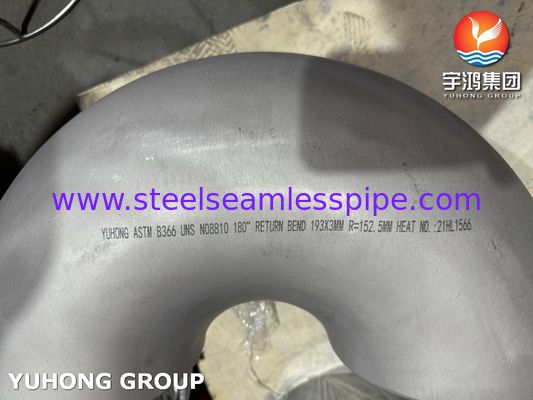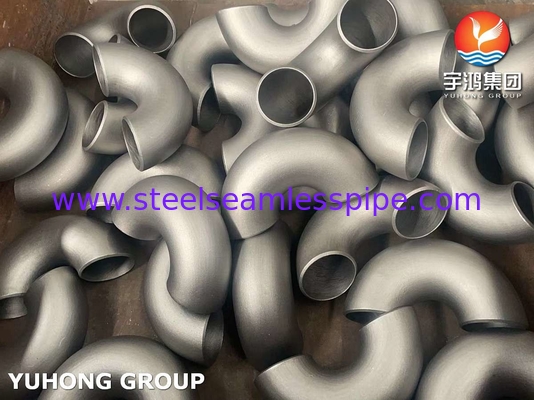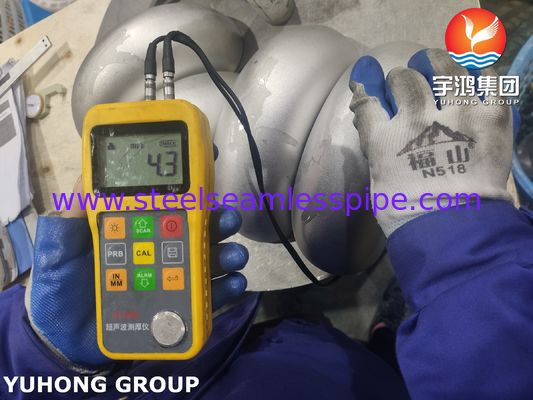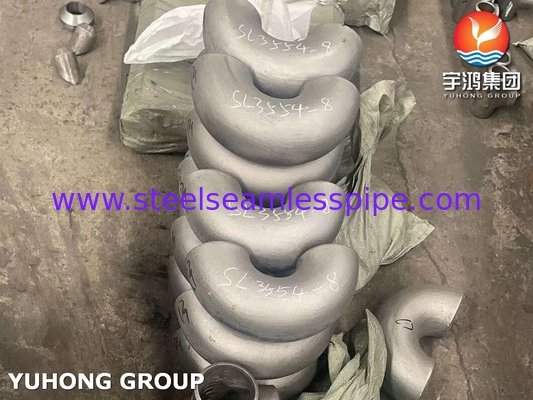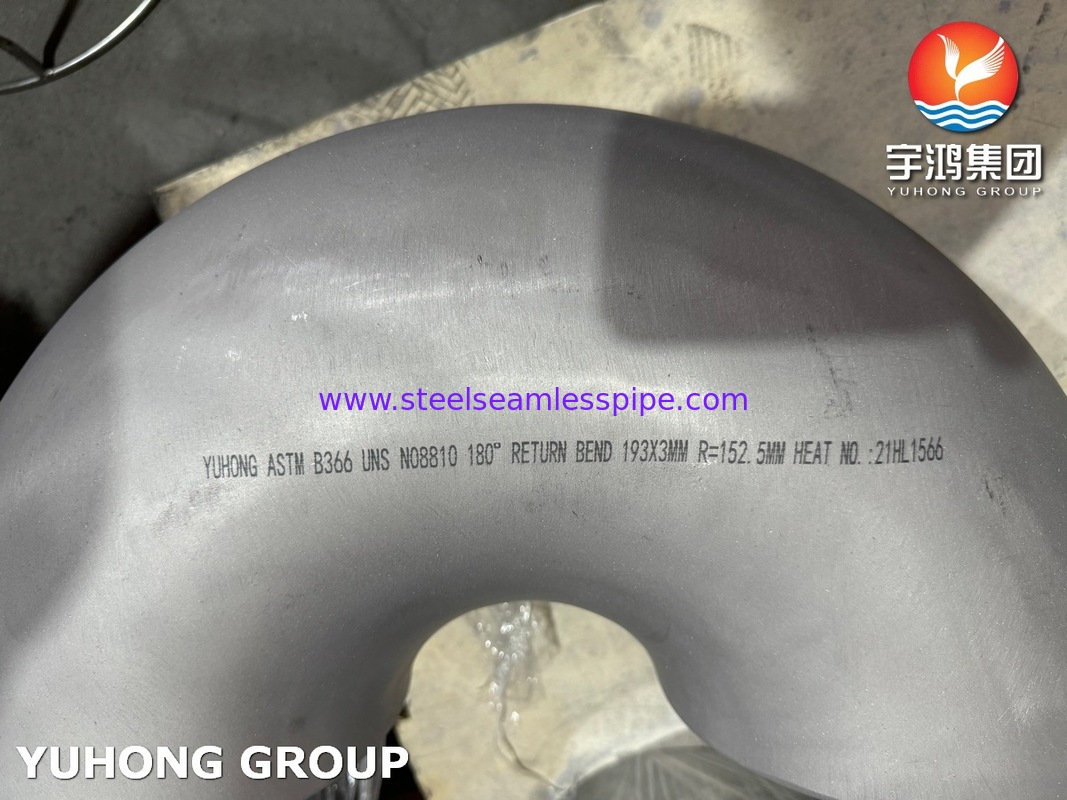STAINLESS STEEL BUTT WELD FITTING 180° ELBOW ASTM B366 INCOLOY 800H RETURN BEND
What is a 180° Return Bend?
A 180°return bend is a pipe fitting that creates a complete U-turn, directing the flow of a fluid (liquid or gas) back in the exact opposite direction from which it came. It is essentially a tight, continuous "U" shape.
Construction: They can be made from a single piece of pipe that is bent (often with a large radius to minimize friction and stress) or constructed from two 90-degree elbows welded together at their outlets.
Key Feature: The inlet and outlet are perfectly parallel and are on the same centerline, just facing opposite directions.
Primary Usage of 180° Return Bends

The core function of a return bend is to reverse the flow direction within a compact space. This simple function leads to several key applications:
1. Heat Exchangers and Coils:
This is one of the most critical uses. In systems like:
Radiators: The coolant flows through a series of parallel tubes. A return bend at the top or bottom connects the end of one tube to the beginning of the next, creating one long, continuous flow path that snakes back and forth through the unit.
Air Conditioning Evaporator and Condenser Coils: Refrigerant flows through finned tubes, and return bends connect the ends of these tubes, forming the coil.
Shell and Tube Heat Exchangers: They are used on the tube side to create multiple passes for the fluid, increasing heat transfer efficiency.
2. Compact Piping Layouts:
When space is limited, a return bend is the most efficient way to double back a pipe run. Instead of making a wide, sweeping turn that requires a lot of room, the return bend creates the reversal in a very tight package. This is common in:
Mechanical rooms
Skid-mounted equipment
Tight spaces between walls or equipment
3. Creating a "Hairpin" or "U-Tube" Configuration:
This is a specific design where a length of straight pipe has a 180° return bend at the end, forming a "hairpin" shape. This is a common element in:
U-tube heat exchangers: Each tube is a hairpin, which allows for thermal expansion (the leg of the tube can expand/contract independently).
In-floor heating systems: Pipes are often run in a serpentine pattern using return bends.
4. Industrial Process Piping:
In various chemical, food processing, or manufacturing plants, the process may require the fluid to make a return trip. Return bends provide a simple, low-resistance way to achieve this without needing multiple separate fittings.
Comparison to Other Fittings:
Vs. Two 90° Elbows: Using two 90s with a nipple in between achieves the same result but has two more potential leak points (the two additional joints). A single-piece return bend is more reliable and often has lower pressure drop.
Vs. 180° "U-Bend": The terms are often used interchangeably. However, a "U-bend" might imply a larger, more gradual radius, while a "return bend" can sometimes refer to a tighter, factory-made fitting.


 Twoja wiadomość musi mieć od 20 do 3000 znaków!
Twoja wiadomość musi mieć od 20 do 3000 znaków! Proszę sprawdzić email!
Proszę sprawdzić email!  Twoja wiadomość musi mieć od 20 do 3000 znaków!
Twoja wiadomość musi mieć od 20 do 3000 znaków! Proszę sprawdzić email!
Proszę sprawdzić email! 
